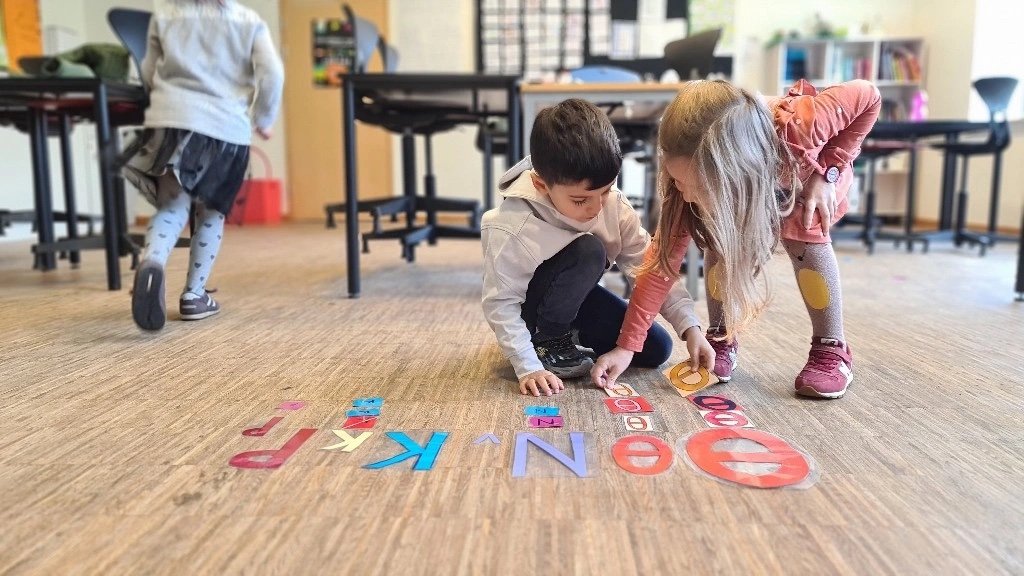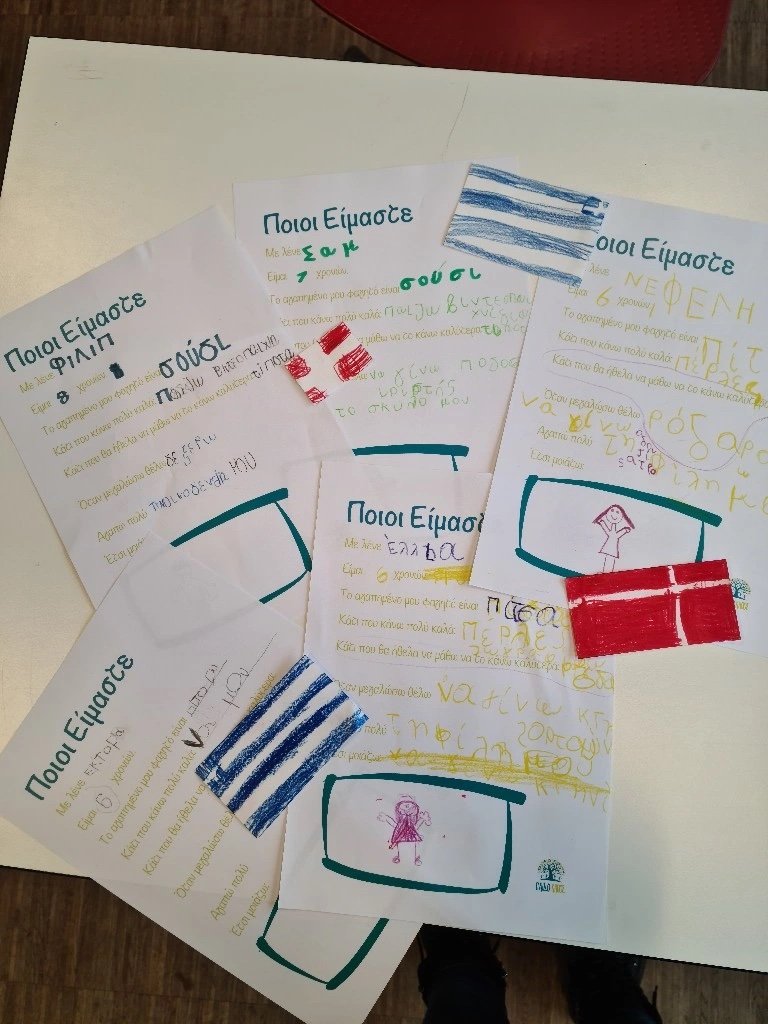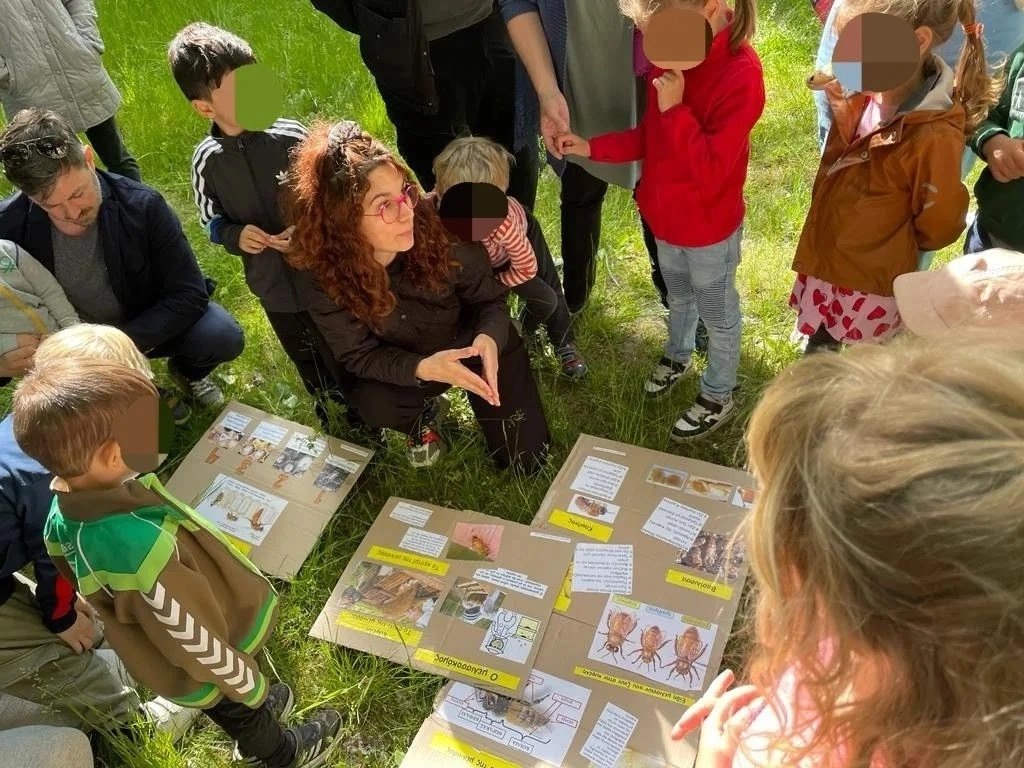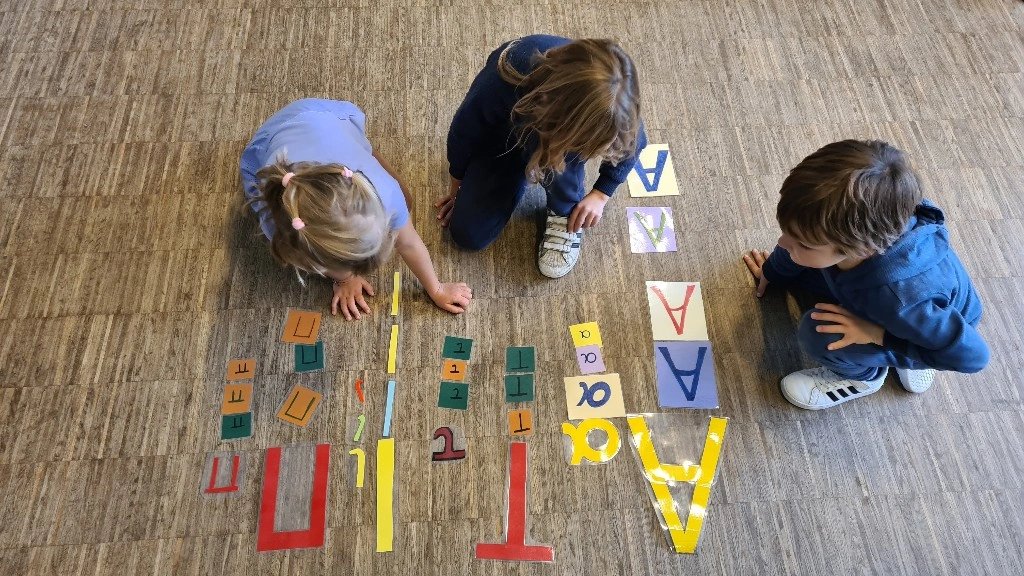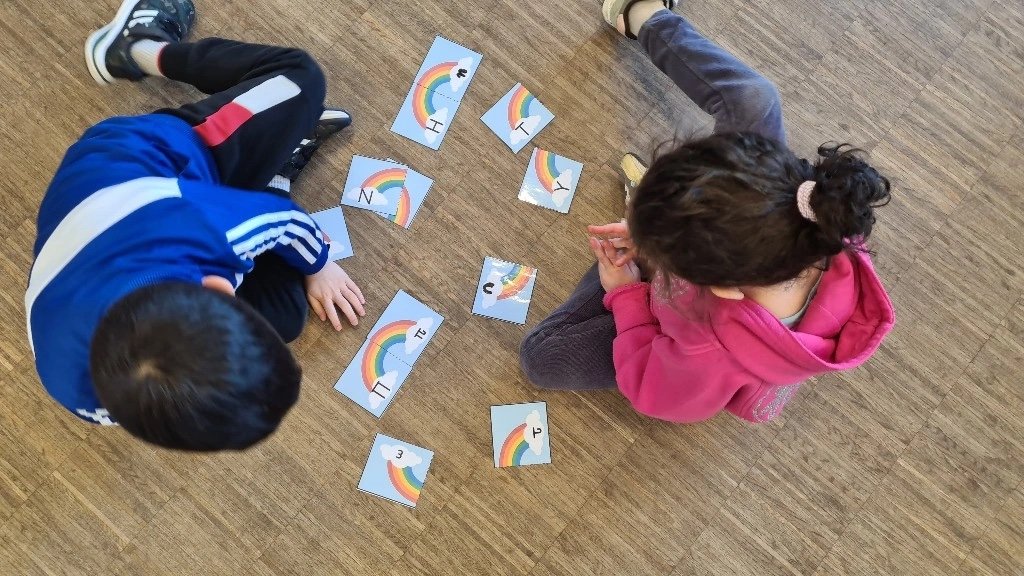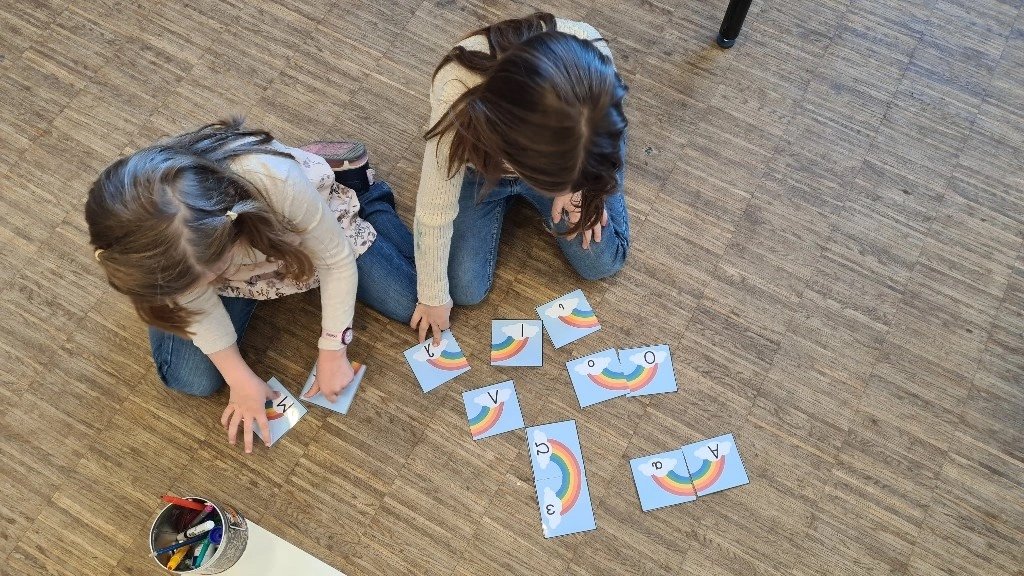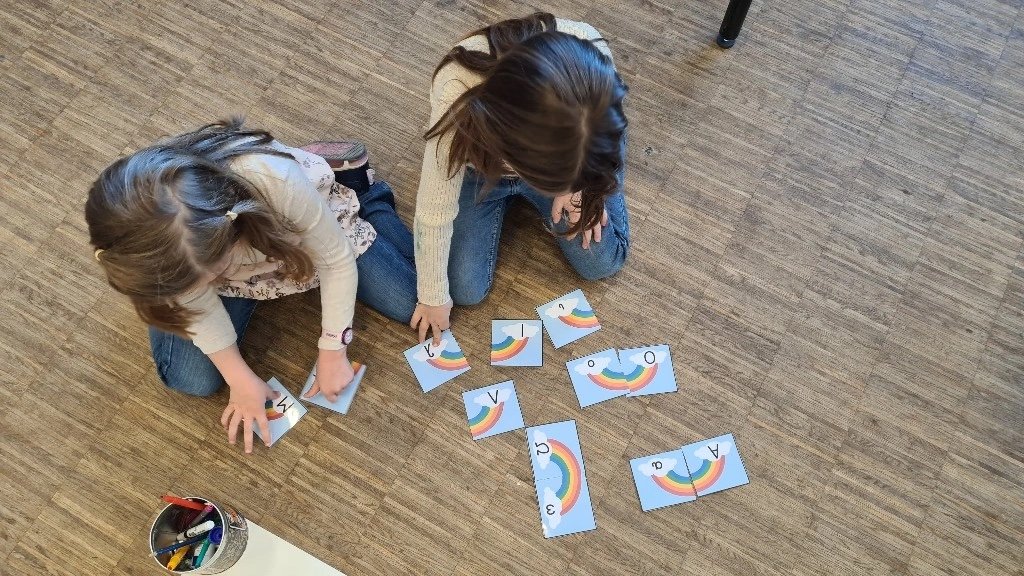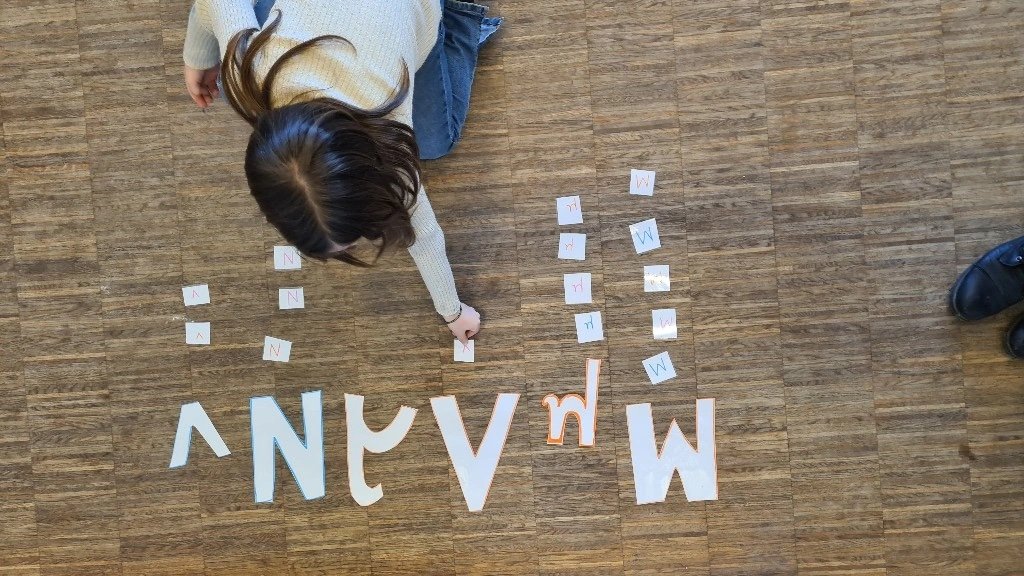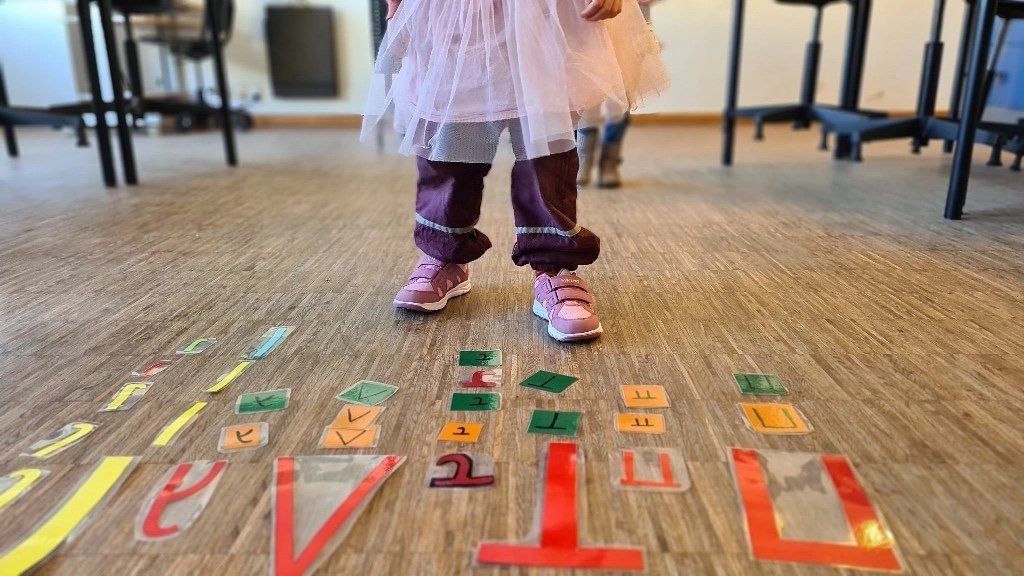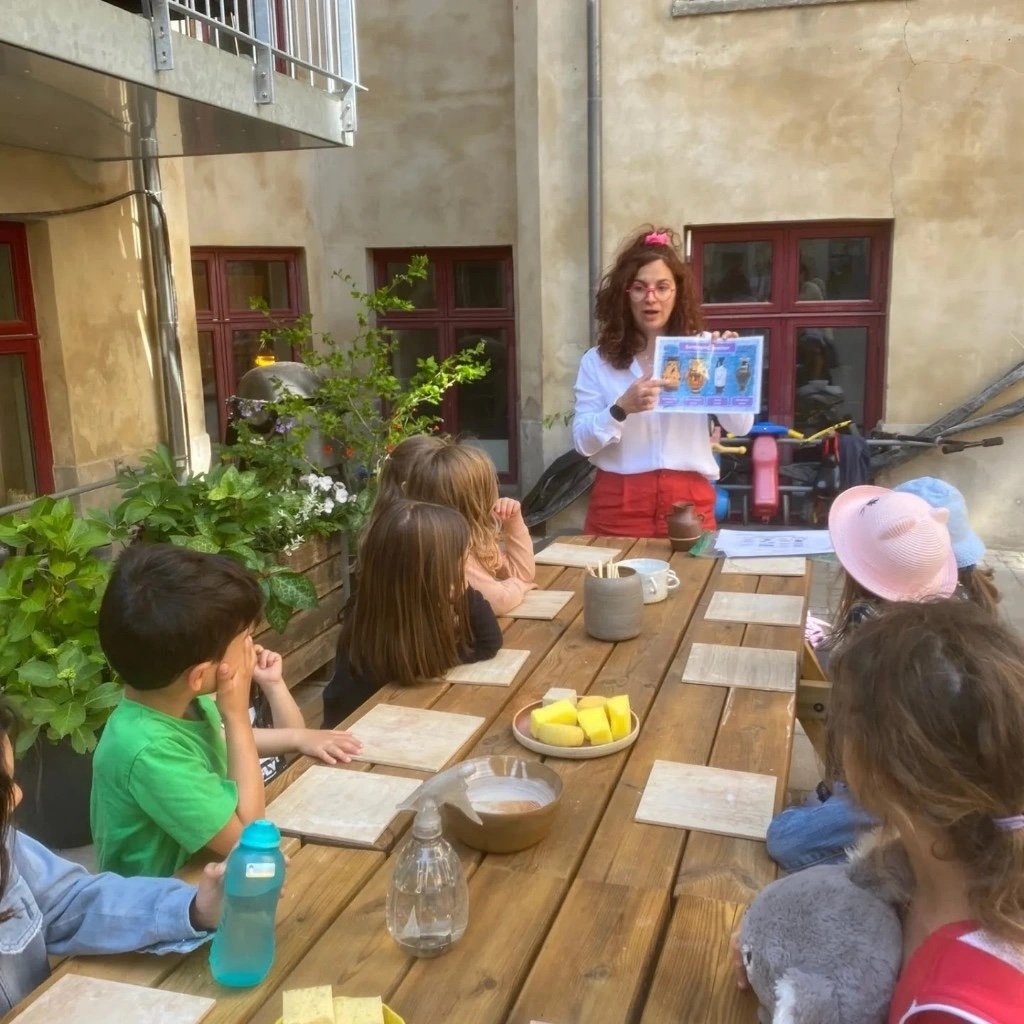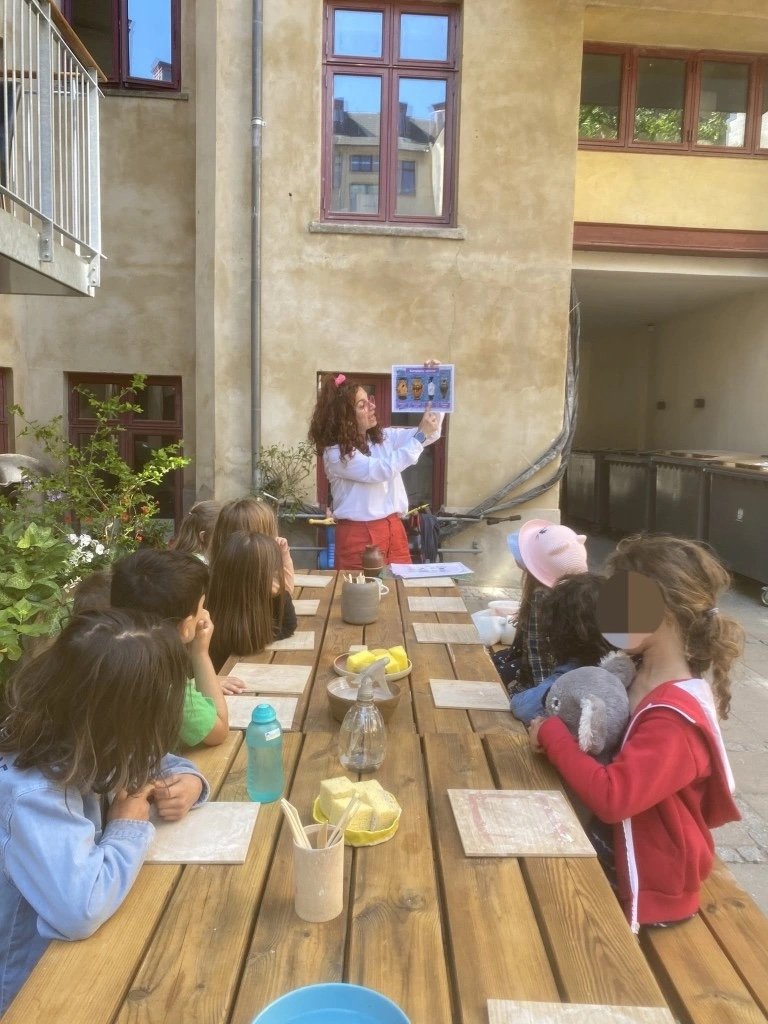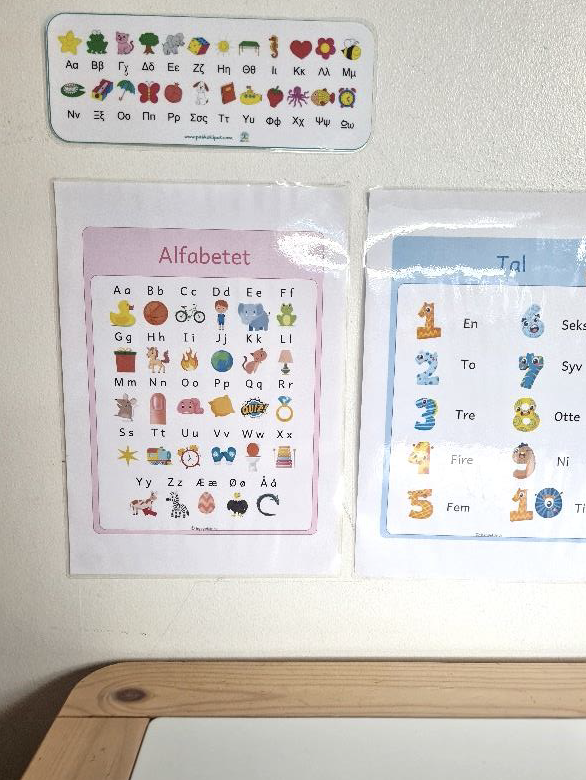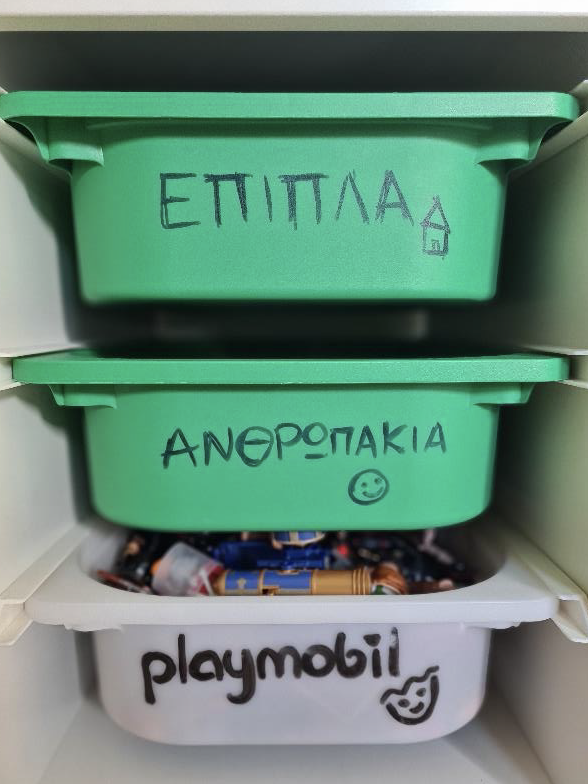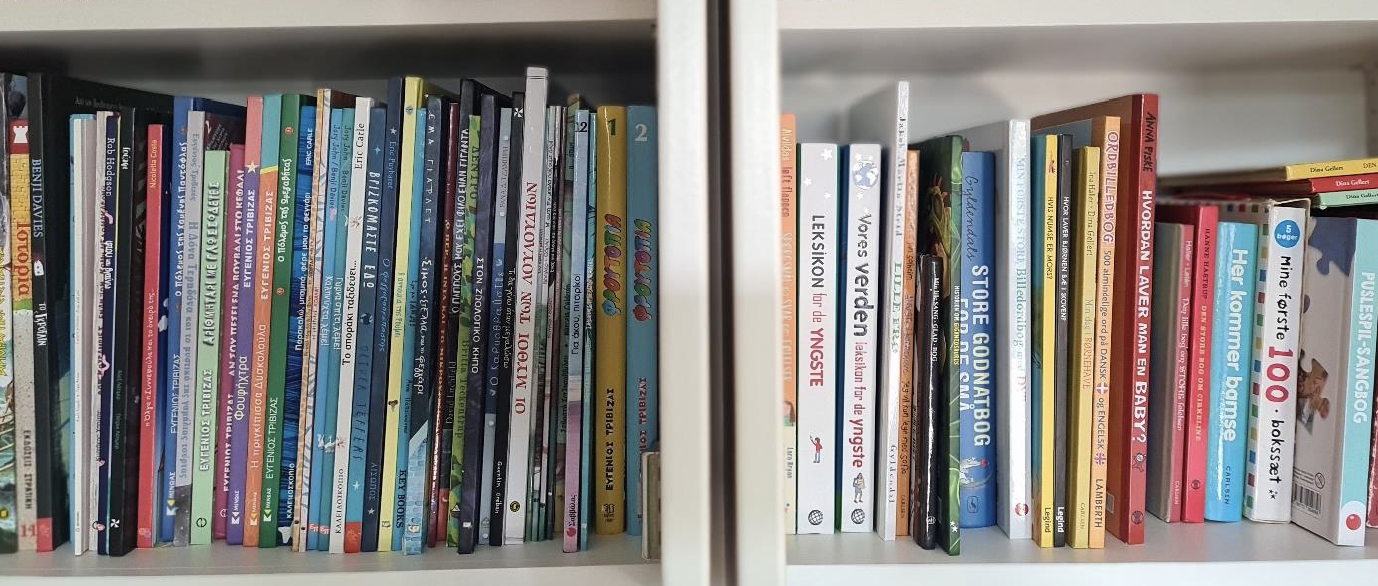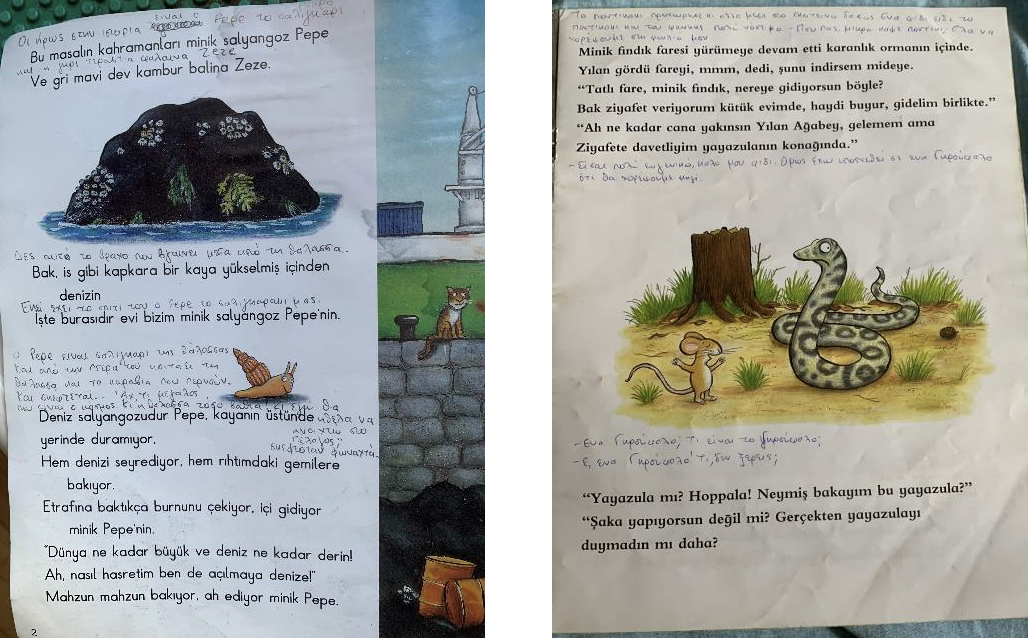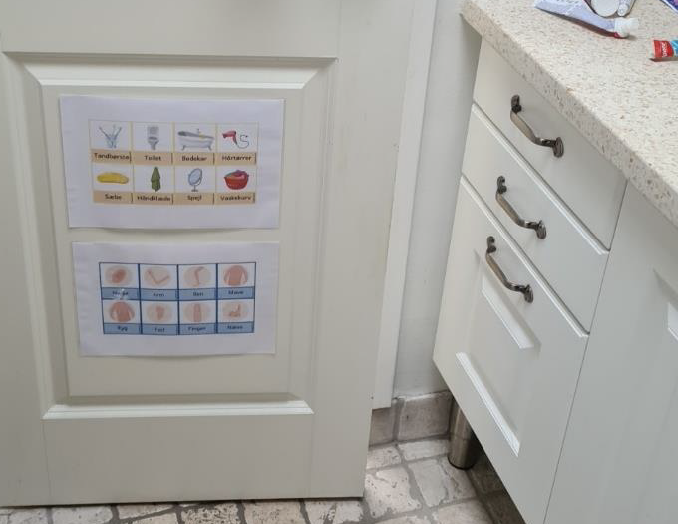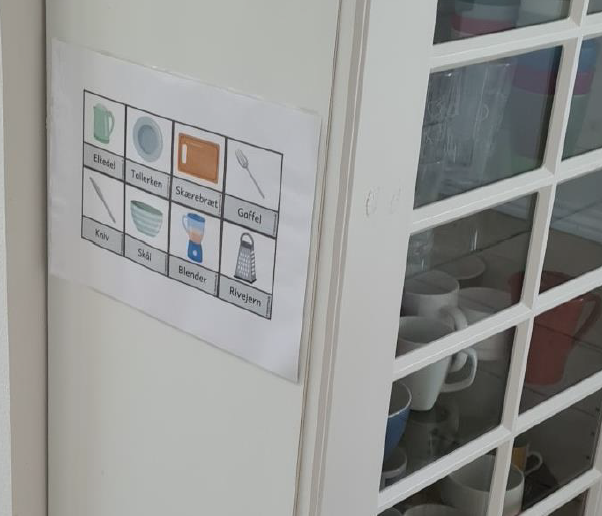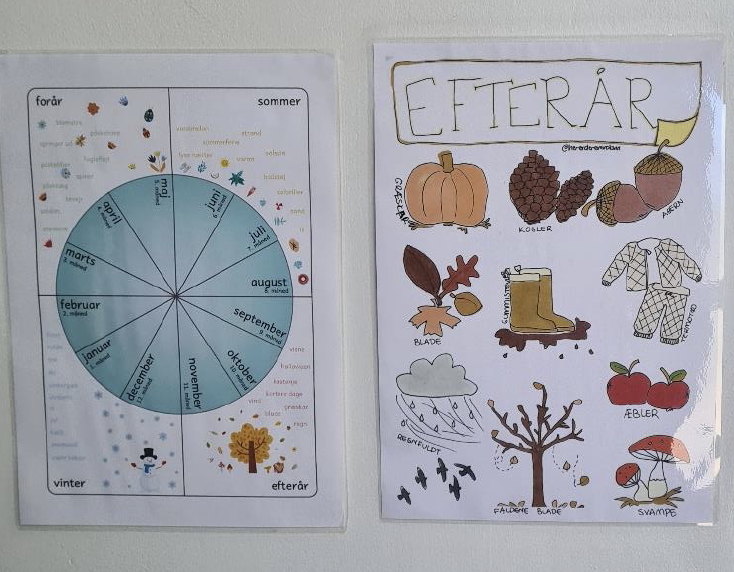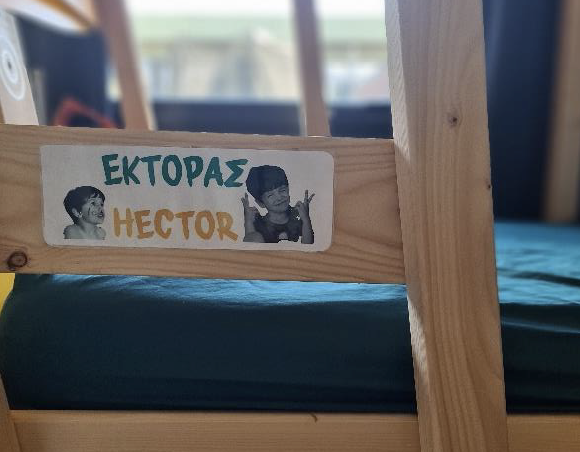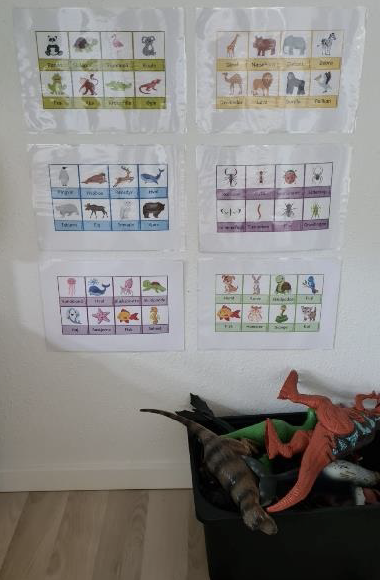Creating a Bilingual Home: Tips and Tricks for A Language-Friendly Environment
by TA-DA! extra-special guest contributor, Chryssa Oikonomidou
Day 6 Infographic featuring insights from language expert Chryssa.
Why Do I Need To Create a Bilingual Environment at Home?
You may ask yourselves: why do I need this now? Why should I even bother creating a bilingual environment at home?
Vibrant community illustrated by Michelle Hiraishi, the artist behind TA-DA!’s English Talking Dictionary.
The answer is simple: to support your child and make his bilingual journey easier. Bilingualism is a gift, but at times the journey might be challenging.
Creating a bilingual environment at home might make the difference and provide the extra support you and your child need.
Furthermore, a bilingual, language-friendly, text-rich environment has several benefits for your child, as it can support their natural linguistic development in all their languages and improve their understanding of concepts.
It will help them develop their literacy skills and increase their cultural awareness.
In everyday life, a bilingual text rich environment could even help them find the right word in the correct language when they need it and increase their vocabulary.
How? Read on and I promise to deliver awesome easy tips and tricks that you can do at your home tomorrow to support your bilingual child!
Sneak Peek into my Practice as a Minority Language Teacher
Chryssa teaching an engaging language class
But first, let me introduce myself and share how I have been supporting and helping both my bilingual students in the classroom as well as my bilingual children at home.
My name is Chryssa, I am Greek and I have lived in Denmark for the past 12 years with my husband, who is also Greek, and my two boys aged 6 and 4.
We speak Greek at home, the children speak Danish at school and a mix of English, Danish and Greek with friends and family.
This means we actively use 3 languages in our everyday life, with mostly Greek at home.
Apart from being a mum of 2 bilinguals, I am also an educator specialized in bilingual/multicultural environments. I am a founder of Paidokipos and Bilingual Mus, where I am a Greek teacher, storyteller and animator during interactive educational theater events, as well as a family language coach helping parents throughout their multilingual parenting journey.
In my practice in class, I am a big fan of having a print-rich classroom. I use lots of flashcards and movable prints that my students can engage and interact with during our routines, games we play or projects we run.
I insist on using the same materials of any new concept I am introducing to them until they have fully internalized it.
A snapshot from TA-DA!'s Talking Dictionary showing a multilingual home
How To Create A Bilingual+ Environment At Home
Same as in the classroom, I have followed the same principles at our home, through the curation of flashcards, posters, labeling, hanging the alphabets (Greek and Danish) and more.
It’s not just having a rich text environment though. To create a bilingual environment, you have to consider all the things you have in your house that are reinforcing the languages you use, for example the songs you are listening to, the shows you watch on TV, the games you play, the people you talk to or invite over.
A child's desk showcasing the Greek & Danish alphabets
Toy boxes labeled in multiple languages
A diverse range of books showcasing all our supported languages
So how do you do it?
Below I’ll share with you my top 10, easiest, fastest things to do to create a bilingual environment in your home.
1. BOOKS
Books. Loads of them. In all your languages.
Books can be expensive, but you can always get the most out of your budget using some of these tips:
・Translate your existing books directly on the book
・Buy second-hand, loan books from your local library
・Exchange children books with other parents
Turkish books translated to Greek, courtesy of a student's parent
2. LABELING
Label everything in your house in all your languages - or only in the language where you need to increase your child’s exposure.
Who hasn’t experienced the feeling of wanting to say something and failing to recall the correct word?
Labeling is really helpful in those cases, even for the adults of the family and especially for those who are not fluent in one of the languages used actively in the house.
Bathroom vocabulary poster keeping language learning ever-present
Kitchen vocabulary poster, a culinary and linguistic guide
3. SEASONAL/ THEMED POSTERS & FLASHCARDS
You can create your own bilingual, rich text posters and flashcards or find already made printables online with vocabulary on some specific themes (i.e. Christmas, fall, winter, summer, spring, weather vocabulary or posters with all animals, or food).
(I found all the ones you see in the pictures online for free.)
Place them where it makes sense.
・You can, for example, place the food vocabulary poster next to your child’s kitchen toys, or create menus in all languages.
・Place the animal vocabulary poster next to their animal toys.
・Place the seasonal vocabulary posters at the entrance hall and the weather poster next to a window, so that you can comment on the weather you see out the window while having the vocabulary at all languages handy.
Make sure that you change the posters often, as children and adults will soon lose their interest. I keep all my resources organized in a closet and switch them out depending on the season or our focus areas to keep things exciting!
Seasonal vocabulary posters welcoming you at the entrance hall
Animal vocabulary poster next to the children's toy box
4. NAME TAGS
(If applicable in your target languages), use name tags and write the child’s name in all his languages.
Name tag in both Greek and Danish on a child's piece of furniture
5. LEAVE NOTES TO EACH OTHER IN ALL YOUR LANGUAGES
Write on post-its and place them in their lunchbox or post them in the mirror for them to see when they wake up. It can be a simple “I love you” in all your languages to something more complicated depending on their age and literacy skills.
6. BOARD GAMES, TRIVIA AND QUIZ GAMES
Ensure you have board games in all your languages.
Children love to quiz each other and their parents so consider getting some trivia games. You can also create your own quiz games and adjust the questions and their difficulty level depending on your needs (child’s age, language literacy skills etc.).
7. LISTEN TO MUSIC FROM ALL YOUR COUNTRIES & CULTURES
Ensure your children are exposed to songs covering all their languages. For the younger children, at preschool in every country there are usually some very easy, small, repetitive songs.
What worked very well with my preschool Greek students living in Denmark (from 18 months old to 5-6 years old), was when we translated these super simple songs from Danish (community language) to Greek (minority / home language). The kids loved it! Especially the ones that were not motivated to speak Greek were hooked, since suddenly they were hearing a well-known melody for them in a new language they do know.
How to do it: Ask the school for a list with the songs your kids are singing in day care, research the lyrics online, translate them to your home language and try singing them to your kids.
8. SCREEN TIME
Ensure your child sees shows in all his languages. If he has a favorite show, check if this show exists in their other languages.
9. APPS
Joe Shochet, the mind behind leading children’s apps, and a TA-DA! advisor who ensures their touch paper talking language products respond like his apps, minus the screen
In every country, in every language there are apps made for children.
Do your research and ensure you download apps covering all your languages.
10. PLAYDATES
As a parent of a bilingual child, especially during the early years where you can decide what you do and how your family free time is spent, you play a vital role in becoming your child’s “Language Secretary”, ensuring they are exposed to all their target languages equally.
The same applies to playdates at home and family free time: Are they getting socially involved with children speaking all their languages?
If not, try to think how to make this a possibility for them.
Some ideas of what you could do:
・Consider a school / preschool play group in the minority language
・Find minority language communities and join
・Find groups on facebook and post there to find people living near you (you could search for example “Greek parents in Copenhagen”)
・Ask your embassy (most times they know what’s going on in the area)
Final Tip
One final tip is to talk to your kids about bilingualism/multilingualism. Even if it might feel too early, believe me, it never is!
Discuss with them, point out that mummy is speaking X language and daddy Y language, while in day care everybody speaks Z language.
Teach them the name of each language, and don't be afraid to point out differences and similarities.
And remember: Don’t hesitate to ask for help when and if you feel overwhelmed!
Chryssa Oikonomidou
About the Author:
Chryssa Oikonomidou is an educator specialized in bilingual/multicultural environments. Founder of Paidokipos and Bilingual Mus, where she acts as a Greek teacher, story teller and animator at interactive educational theater events, as well as a family language coach helping parents throughout their multilingual parenting journey (for more info check out Bilingual Mus’s Services). You can read more about Chryssa on Bilingual Mus’s website.
Linkedin: https://www.linkedin.com/in/chryssaoikonomidou/
Paidokipos website: https://paidokipos.com/
Bilingual Mus website: https://bilingualmus.com/
Unlock the Power of Bilingualism in Just 20 Days with TA-DA!'s Bilingual Blogathon!
Ready to make bilingualism more than just a goal? Join us on a 20-day deep dive into the fascinating world of language and culture. Each day, we unveil enriching insights, firsthand experiences, and actionable tips that will empower your family's bilingual journey.
Still ahead: Meet a mom of 6 who's also a toy empire magnate, hear from leading voices in the Latino community, and learn from parents and educators who have been in your shoes. They all have invaluable insights that you can effortlessly integrate into your family's daily life.
Don't miss this chance to make bilingualism a joyful, attainable reality. Sign up now!




